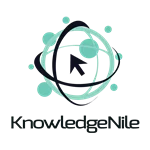A Natural Language Processing API is a machine learning model. It is made with the purpose of for analyzing text and speech. NLP APIs read and understand syntax, extract entities, and evaluate meaning of text and speech.
Natural Language Processing (NLP) come under artificial intelligence (AI). It aims to make human language understandable for machines. NLP is a combination of the powers of linguistics and computer science. This enables machines to study the rules and structure of language and create intelligent systems. These systems are able to understand text and speech. They can also analyze them and extract meanings.
What is Natural Language Processing API used for?
NLP helps machines in understanding the structure and meaning of human language. It is done by analyzing various aspects such as syntax, semantics, pragmatics, and morphology. Computer science converts this linguistic knowledge into rule-based machine learning algorithms. These algorithms aim on solving defined issues and perform specific tasks.
Taking Gmail as an example, emails are automatically classified into categories. These categories are advertising, social, primary, or spam. This is possible due to an NLP task called keyword extraction. Machines read words in the subject lines and associate them with predefined tags. This enables them to learn which category e-mails should belong to.
There are many benefits to Natural Language Processing APIs. Here are some benefits:
- Do analysis on a large scale
- NLP helps machines to understand and analyze large amounts of unstructured text data. This data can be social media comments, customer service tickets, online reviews, news reports, etc.
- Automate processes in real-time
- NLP tools can help machines organize and relay information. This is an around-the-clock effort, with little or no human interaction.
- Customize NLP tools for your industry
- NLP algorithms can be tailored to your needs and criteria. These criteria can be complex and industry-specific language, even sarcasm and abusive words.
How Do Natural Language Processing APIs Work?
1: Part of Speech Tagging (PoS)
The technique of morphology is the first step in NLP. It is about defining the functions of individual words. Most people know a simplified form of this process where words can be defined as nouns, verbs, adverbs, or adjectives. But, determining the function of a word is difficult for a computer. This classification of words can depend on their role in a sentence. Many words have changing functions. This makes it especially difficult for machines to learn and understand.
2: Analyze Tree Diagrams
The second step involves the use of knowledge derived from the syntax. It helps to understand the sentence structure. Here the program uses tree diagrams to break a sentence. Examples of phrases are noun phrases, which consist of a proper noun or a noun. An article, or verb phrase, consists of a verb and a noun phrase.
Breaking up a sentence into phrases is 'parsing' and thus result in parse trees or tree diagrams. Various languages have their own different grammar rules. This means that the phrases have different compositions. Also, the hierarchy of the different phrases varies. The grammar rules for a particular language can be programmed into a computer program by hand. Also, machines can learn them using a corpus of text to recognize and understand the structure of sentences.
3: Semantics
Development into the field of semantics is the third step in NLP. A word might have the same tagging and syntactic function. Still, it is possible that the word could have different possible meanings. Following is a simple example of the same:
- Chopping carrots on the board.
- She is the chairman of the board.
With enough knowledge of English, we could immediately see that the first example relates to a cutting board and the second to a board. This is very difficult for a computer. It is difficult for a computer to get the knowledge necessary to decipher the nouns and their correct use.
Top 10 Natural Language Processing APIs
Google Cloud NLP
The tech giant is leading technological innovation. It also leads in almost all disruptive technologies, including NLP. Google Cloud NLP comes with powerful and advanced pre-trained NLP APIs. They can be easily integrated into existing business systems. Google Cloud NLP also contains complete, useful, and accurate NLP tools.
Google's NLP API integrates easily with Google's technology suite. This also includes Google Apps and Cloud Storage. This makes it the best option for companies leveraging the Google ecosystem. Google's AutoML makes it easier for entrepreneurs to find tools tailored to their business needs.
MonkeyLearn
MonkeyLearn is a powerful and robust cloud solution. It gives a user-friendly analytics solution for their business needs. MonkeyLearn's advanced text analysis tools can also perform sentiment analysis. It can also carry out entity extraction. MonkeyLearn NLP is for Python, Java, PHP, JavaScript.
It can also sync with business systems and give access to NLP tools. It also makes it easy for companies to connect to various applications including Zendesk, Google Sheets, etc.
Another feature is that companies can train NLP models on their industry-specific data. This also makes them more personalized and accurate. There are also several tutorials that will get you started in no time.
AYLIEN
AYLIEN is a unique NLP API. It is intended for proprietary business applications or services. This API is available in up to seven different languages. It also offers comprehensive text analysis solutions. It has the ability to automate processes and thus increases its efficiency. They have documentation and tutorials available online. This makes it easier for developers to integrate APIs into existing business systems.
IBM Watson
The IBM Watson NLP API provides businesses with a convenient and streamlined solution for building custom NLP models. It also gives them custom labels and classifiers using small data sets. The intuitive user interface also makes it easy for users with a little machine learning experience to develop and train NLP models.
IBM Watson API is available in up to six languages. It can also parse text in up to 13 human languages. The tools help users create, manage, and test custom NLP models with precision and reliability.
MeaningCloud
MeaningCloud is a specialized text classification API. It can parse single sentences. The powerful classification tools can also analyze individual sentences with the general text. It can also check how the individual sentences relate to one another.
MeaningCloud's statistical classifier performs the categorization of text from the sample text. This is later refined by the rule-based classifier. This means the NLP can also categorize the documents without sample text. It supports many devices ranging from laptops to automobiles.
Luis
Luis is the Microsoft platform. It stands for Language Understanding (LUIS). Luis is a machine learning-based service. It aims at integrating natural language into applications, bots, and IoT devices. Luis also helps to create custom, business-ready models with improving features.
Amazon Lex
Amazon Lex is an AWS service. It creates conversational interfaces in applications that use speech and text. Amazon Lex enables developers to have the same deep learning engine that powers Amazon Alexa. This allows them to build natural language chatbots in new and existing applications.
It also offers the functionality of Natural Language Understanding and Automatic Speech Recognition. This helps to create engaging user experiences and new product categories.
Lexalytics
Lexalytics from Semantria is a scalable NLP API. It can be used to create NLP models for many scenarios. Lexalytics API can analyze around 20 languages. It also offers intuitive customization tools for beginners and non-technicians.
Lexalytics Industry Packs have a special purpose for specific industries. They contain predefined settings for the industry language.
Dialogflow
Dialogflow has capabilities to create speech-to-text and text-to-speech using machine learning technology. It offers built-in support for currencies and dates. There is also support for most platforms like Facebook Messenger, Slack, Alexa, and Google Assistant. It is compatible with various devices ranging from laptops to cars. Dialogflow currently supports more than 20 languages. It is free for a limited number of consultations.
Wit.ai
Wit.ai is a completely free platform with commercial use. No limit has been added on the number of requests. But, when your app is open, your entities and validated expressions are open to the community. But, your records are not, and you still own the data.
Conclusion
Natural Language Processing API is a futuristic and disruptive technology. It enables companies to save time and money. Meanwhile, it also improves their efficiency through automation. You need to make sure to choose the right NLP API that has the right tools for your specific business needs.
As technology advances, there will also be an increase in several sub-areas of NLP. These sub-areas include NLU, semantic analysis, and so on.
Natural Language Processing API can save time, money, and perform tasks that may seem impossible. There is a lot to learn from NLP APIs. Yet, if you are an experienced coder, or want to copy and paste a few code lines, something is available for each skill level in the above-listed APIs.
You may like to read:
What Is A Deep Learning Framework: Top 10 Frameworks
Conversational Analytics & Natural Language Processing & Their Effects





